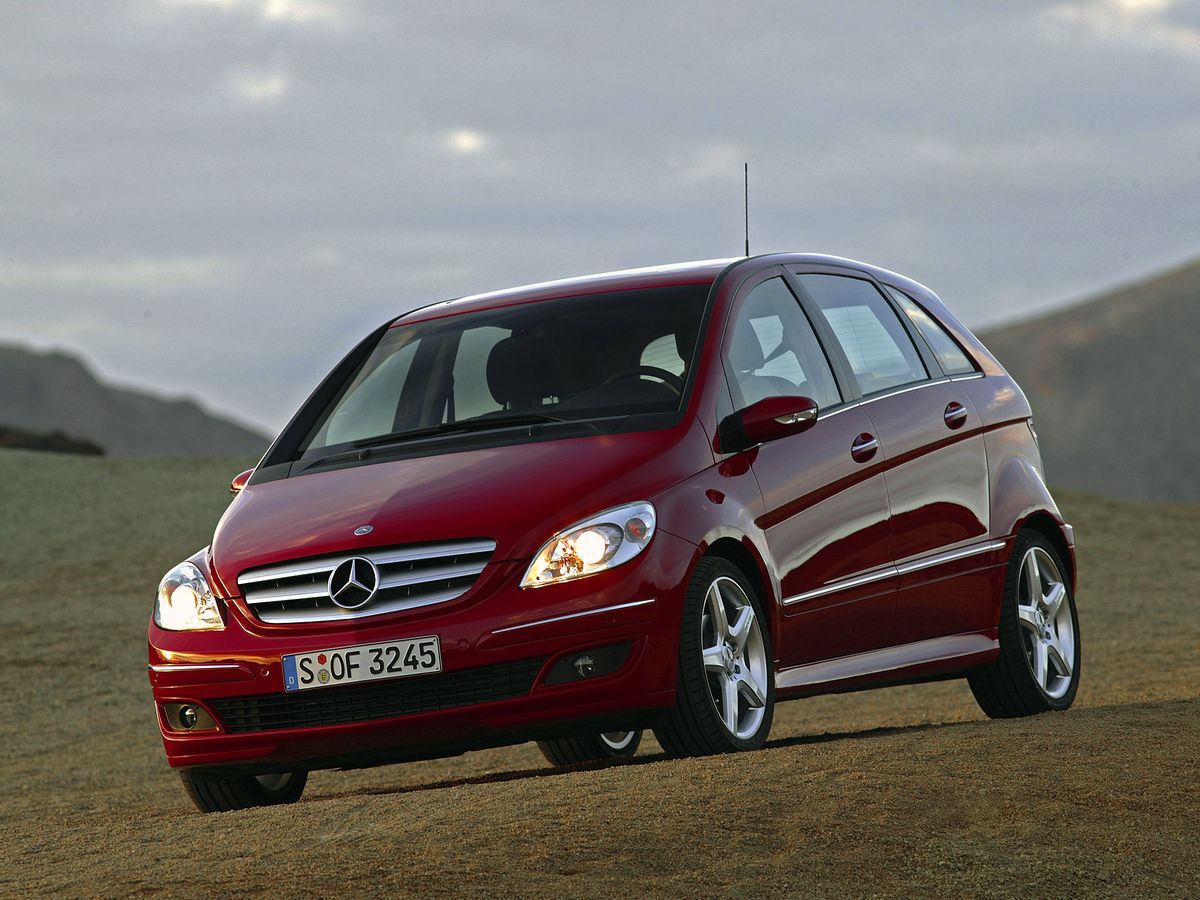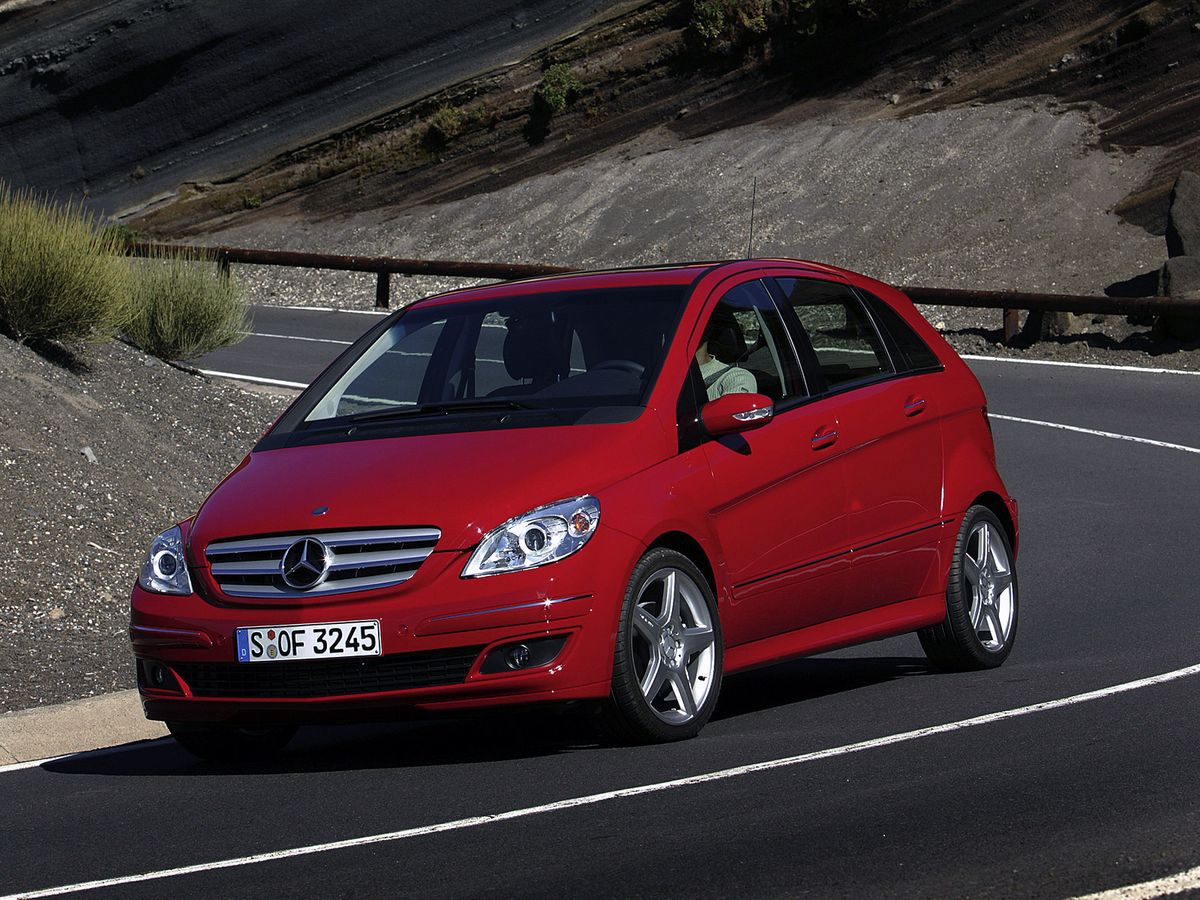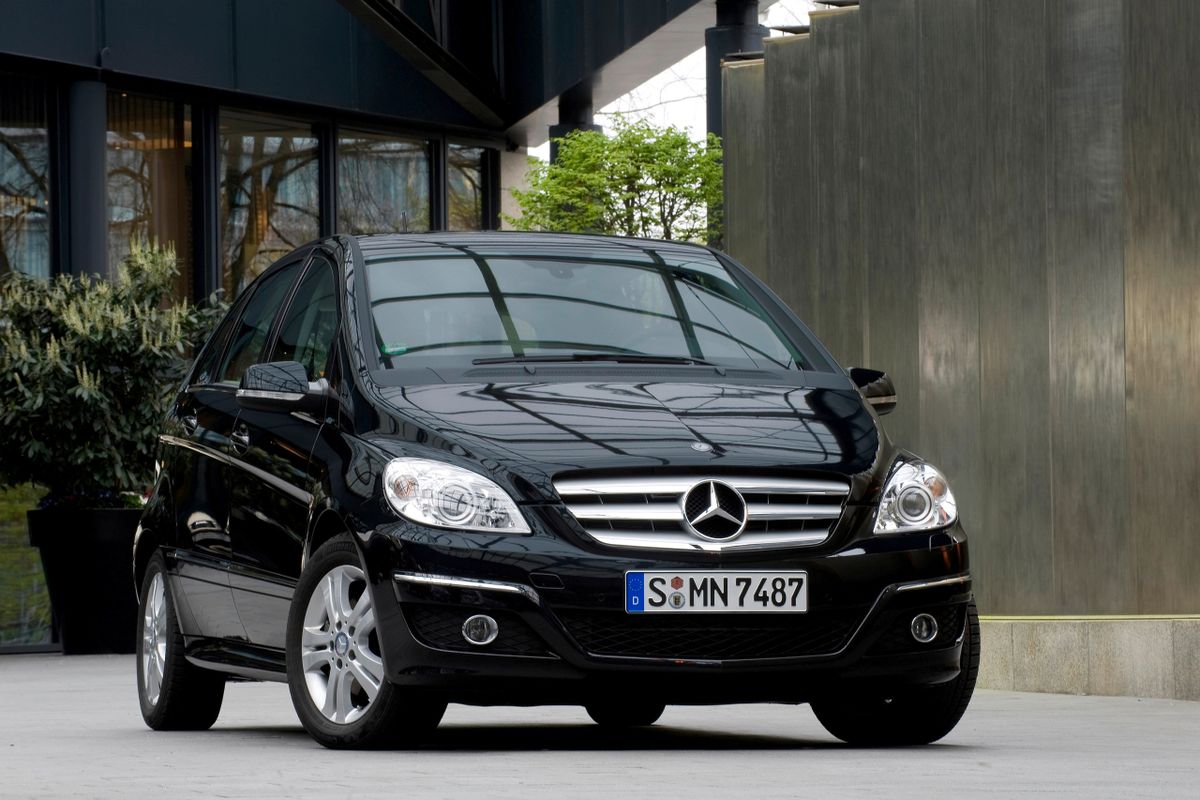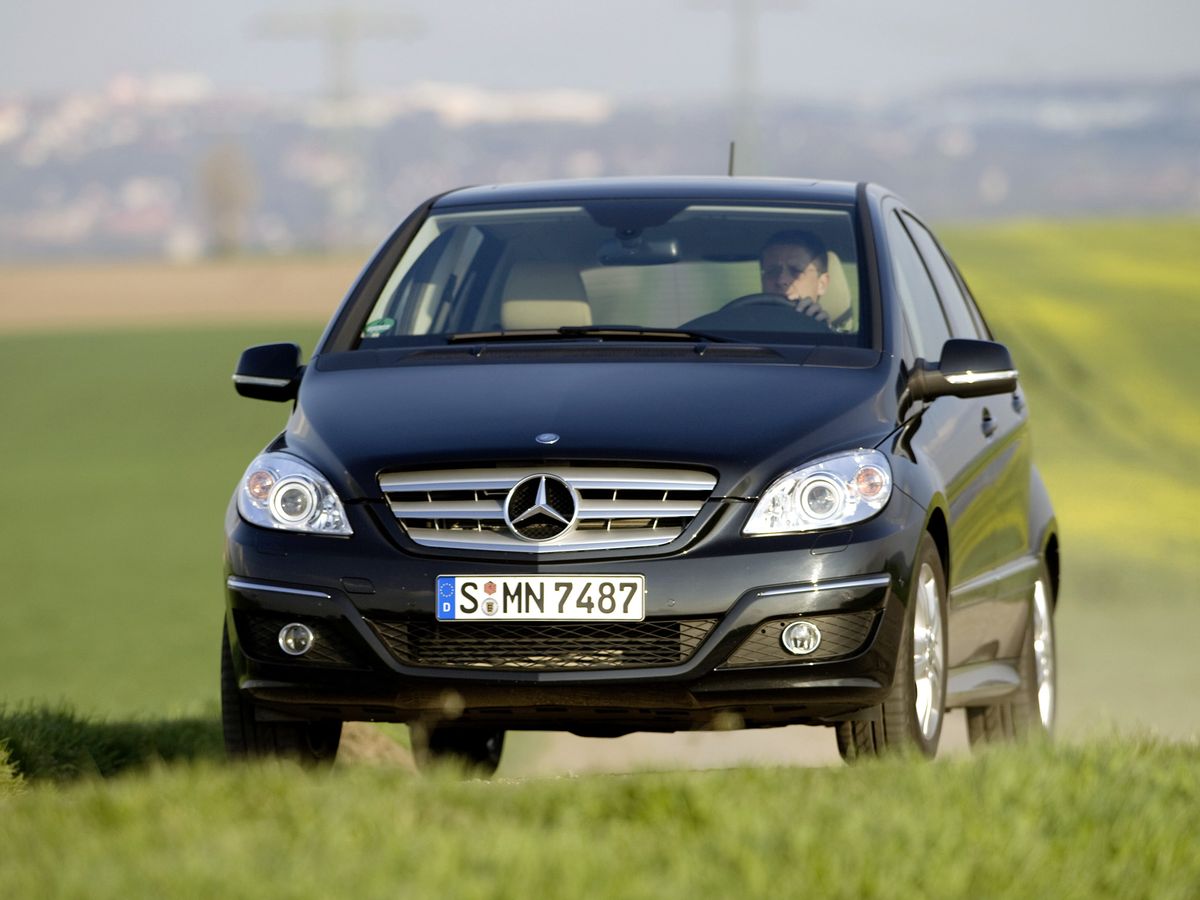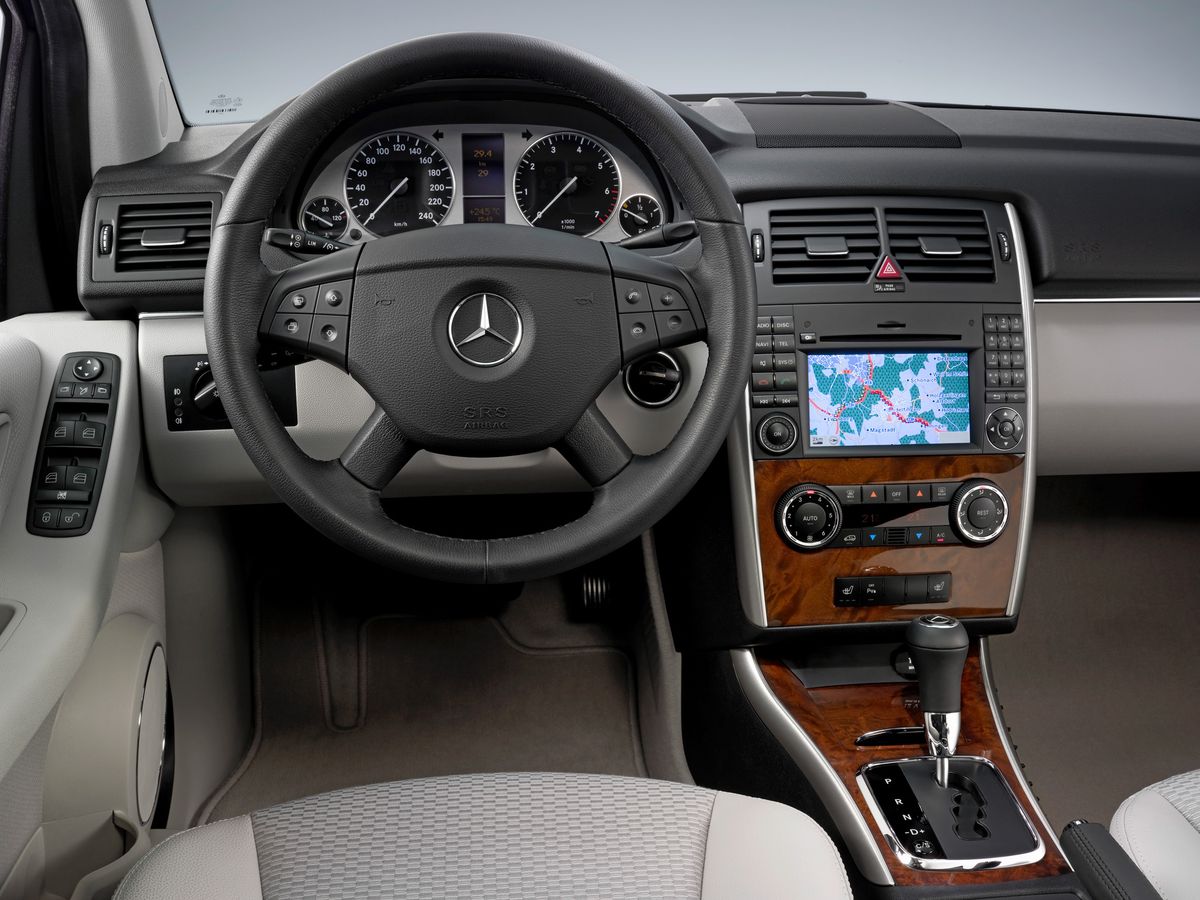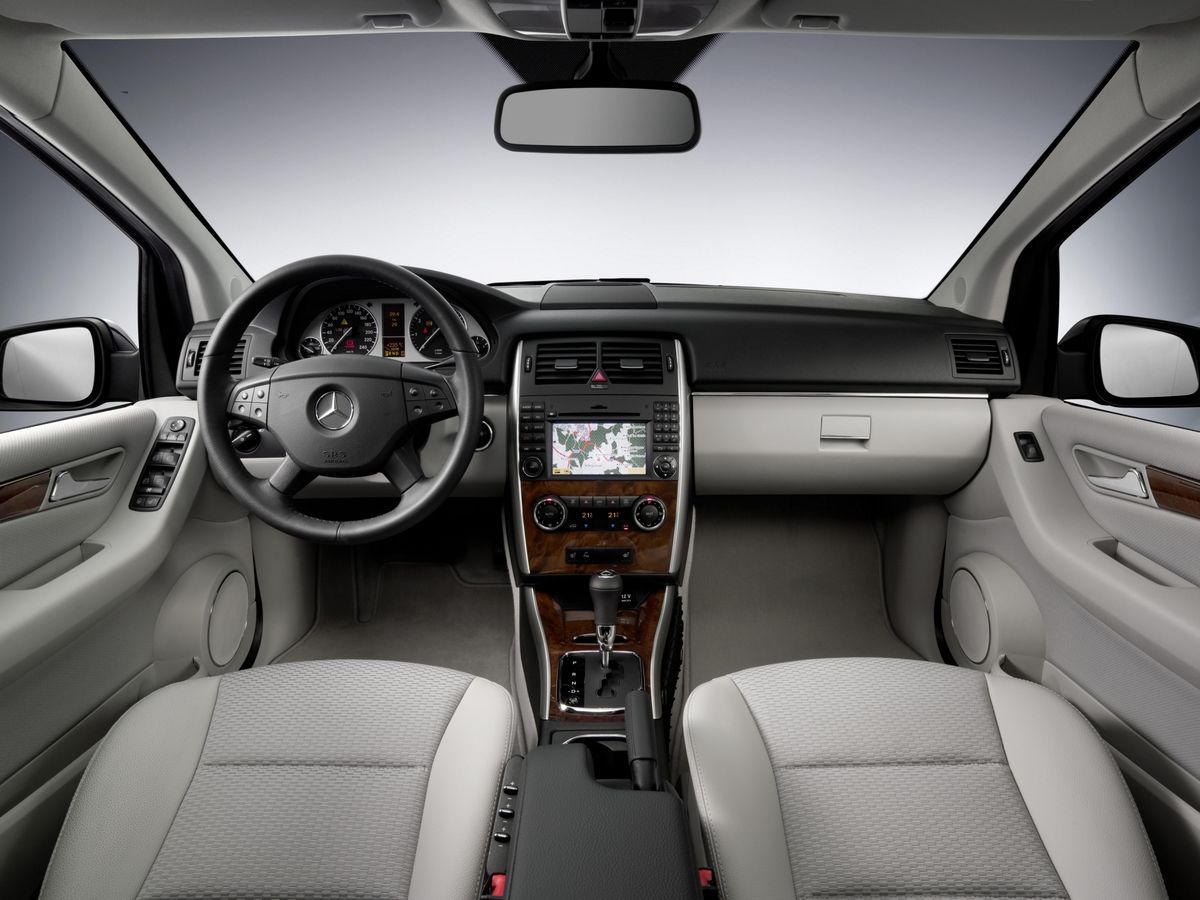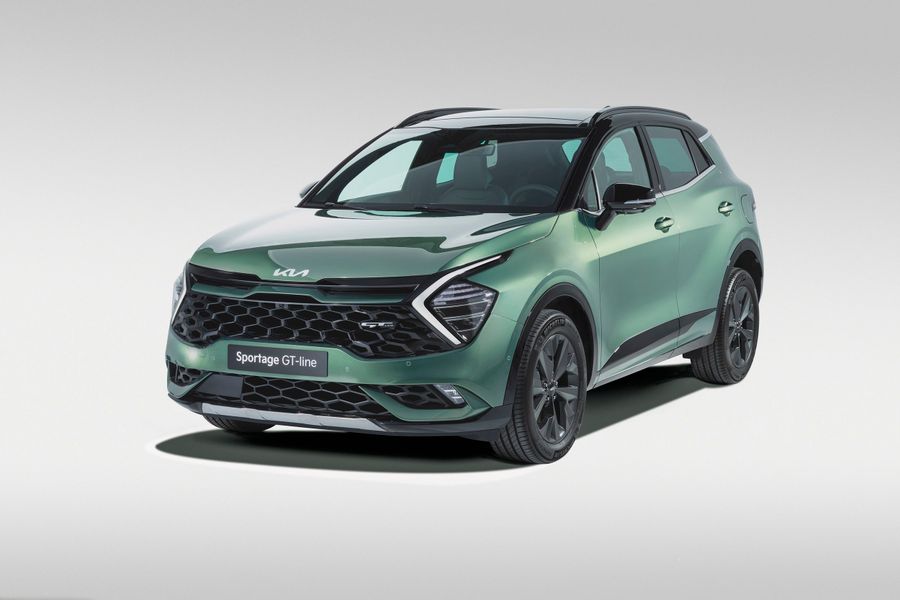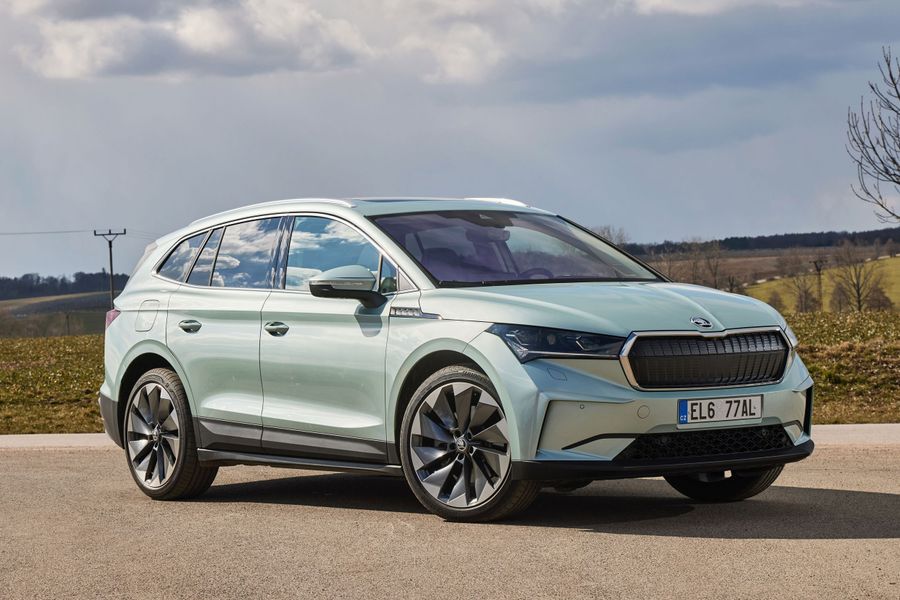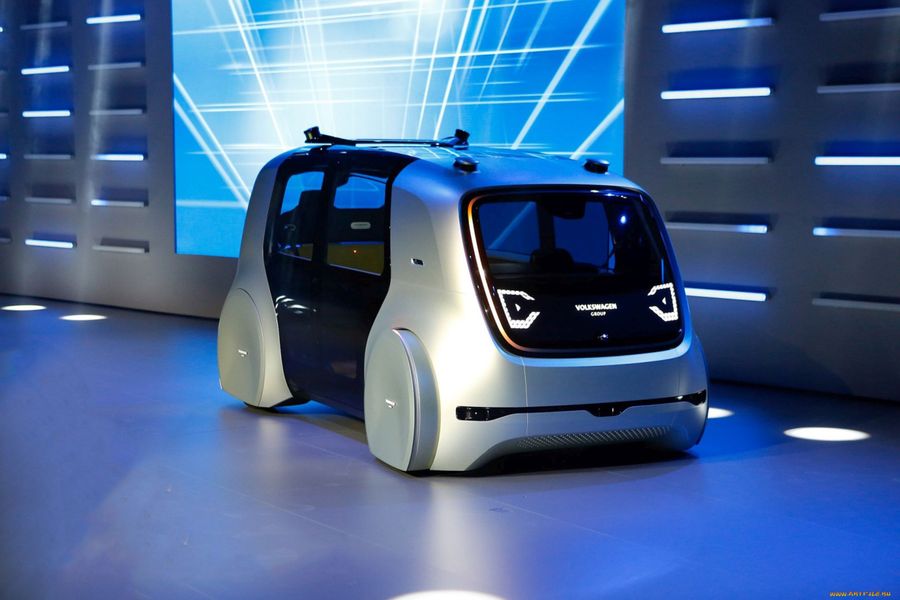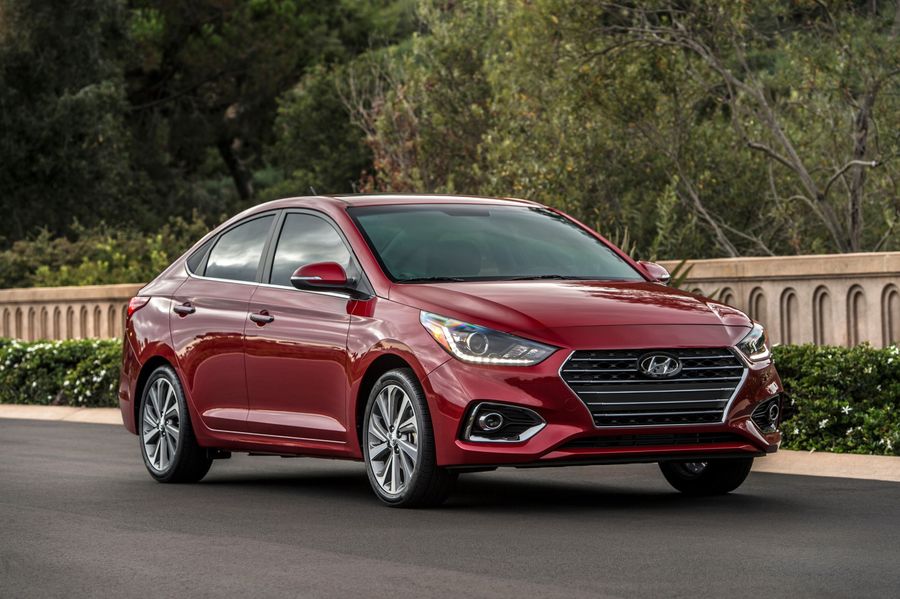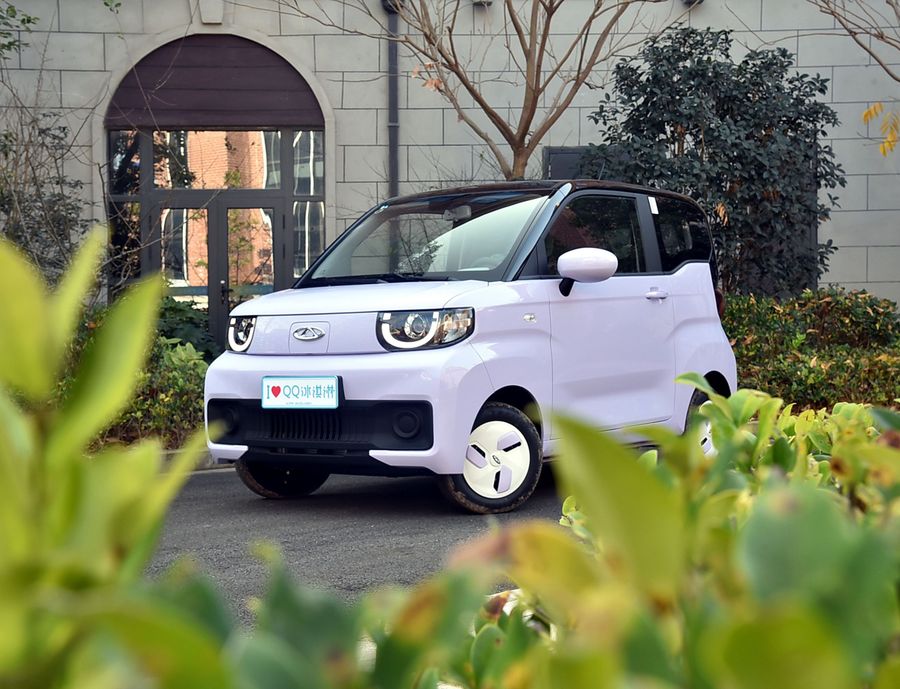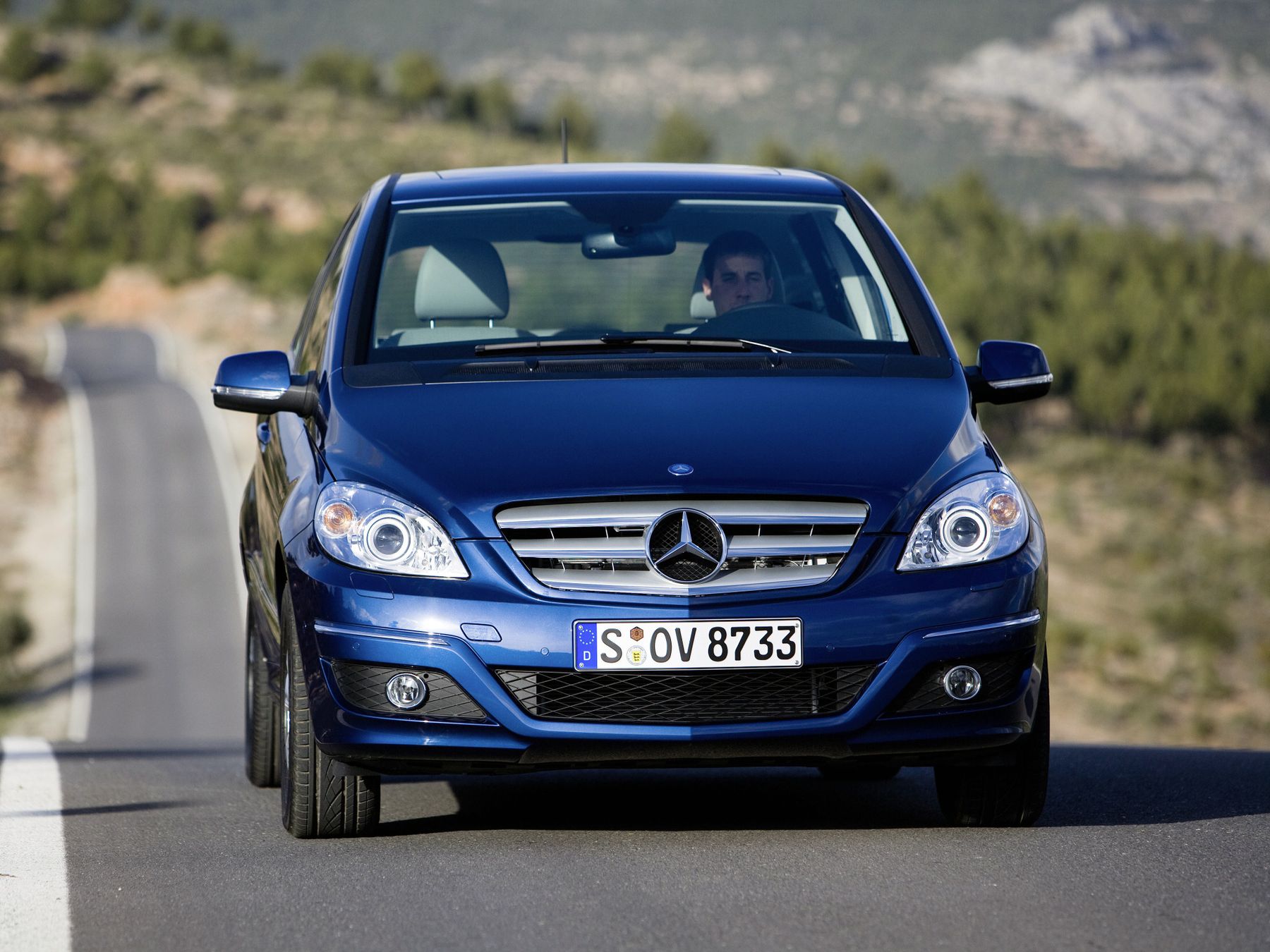
An alien from another dimension
In February 2005, Mercedes-Benz unveiled the first B-Class W245 (T245 in internal documentation) model at the Geneva International Motor Show with the tagline ‘A new dimension of Mercedes. The B-Class’. Following the spirit of times, there was a massive internet campaign dedicated to the new series.
The W245 was the first vehicle in the series to embody the concept of sports tourism, which was implemented as part of the ‘Sports Tourer’ project. That is, these vehicles were initially designed for sports tourism purposes, but in fact they became popular with the city people, including young club-goers and serious family middle-rank managers. When creating such small, but roomy and safe cars, the developers used various elements of estates, MPVs and SUVs, and even sports models.
Just like the A-Class Mercedes W168 and W169 models, the first representative of the B-Class was based on the sandwich floor concept, that is, the engine and transmission were located almost under the floor. But the B-Class initially surpassed the ‘sandwich comrades-in-arms’ in all respects: its body was 4,270 mm long, and the wheelbase was 2,778 mm, so the distance between the seats was almost like that of the S-Class Mercedes. The compact layout of the engine and transmission provided an interior volume comparable to that of sedans and estates. The cargo compartment could be adjusted in height, whereas the front passenger and rear seats could be folded, practically turning the tourist compact car into a van. Depending on the position and installation of the seats, the trunk compartment volume reached 2,245 liters, which was typical of large estates.
Engines and chassis
The B-Class was equipped with the well-proven CDI diesel engines:
- 180 CDI with 109 hp;
- 200 CDI with 140 hp;
… and new four-cylinder petrol engines:
- В 150 with 95 hp;
- B 170 with 116 hp;
- В 200 with 136 hp;
- B 200 TURBO with 193 hp
The B 200 TURBO modification deserves special mention. It acquired a new 2-liter turbocharged and intercooled engine that accelerated the Compact Sports Tourer to 100 km/h in just 7.6 seconds and delivered a top speed of 225 km/h. As for diesel engines, it is worth noting the B 200 turbocharged diesel engine with Common-rail Direct Injection (CDI), which could accelerate the car to 100 km/h in 9.6 seconds and reach a maximum speed of 200 km/h. The B 200 TURBO, B 180 CDI and B 200 CDI engines were accompanied by a 6-speed gearbox. Moreover, all engines could be optionally equipped with an AUTOTRONIC continuously variable automatic transmission.
The designers wanted to make the suspension balanced in terms of agility and safety: an electric motor was installed in the electromechanical power steering to enhance steering regardless of the vehicle speed. From a practical point of view, this ensured better steering at low speeds, that is, easier parking and maneuvering in confined spaces. The signature rear axle with spherical parabolic springs contributed to stable, sporty and precise handling at all speeds.
Safety and comfort
Another advanced standard feature of the B-Class was the selective damping system, which adapted to the driving situation, providing comfort when driving at low speeds and helping to stabilize the vehicle during dynamic cornering. The ESP stabilization functions were complemented by the STEER CONTROL with electromechanical power steering to stabilize the vehicle in critical situations.
The first generation B-Class safety was based on sandwich floor technology. The safety system included two-stage front and side airbags, pretensioners and belt force limiters, active head restraints, child seat attachment devices. The reliable safety systems installed on the first generation B-Class models received the NCAP’s 5 star-rating after a series of crash tests in 2006.
As for comfort, the B-Class was equipped with systems that were previously only installed on the higher-class Mercedes-Benz sedans. Additional options included automatic climate control, electrically adjustable front seats, COMAND APS navigation system or Audio 50 APS. The B-Class also became famous for its package of multimedia equipment. It became the first car to feature the pre-installed Apple iPod infrastructure.
In 2007, the Mercedes B-Class W245 was named the best German car of the year in the MPV category. And in 2008, the German environmental research institute ÖKOTREND awarded the Vehicle Environment Certificate to the B 200 CDI and A 160 CDI.
The headlamps were additionally equipped with bi-xenon technology and active cornering and lighting functions as standard. The B-Class was distinguished by a new panoramic sunroof with shutters, as the roof opening was two-thirds larger than that of the sliding sunroof on other models.
Restyling
In March 2008, three years after the start of production of the B-Class, Mercedes-Benz introduced an upgraded generation of the 245 series. It was due to the need to comply with the Euro 5 new environmental standards, which came into force in 2009. Therefore, the engines were modified. There were still six engines to choose from: two diesel direct injection engines and four petrol engines. But the engineers managed to reduce fuel consumption when driving in urban conditions. Thus, the diesel B 180 CDI and B 200 CDI engines started consuming 7% less compared to the previous generation engines. And the petrol engines acquired an ECO Start-Stop function, which automatically turned off and on the engine at short stops (for example, at traffic lights), which was a good way to save money for the driver who was forced to drive in dense city traffic. The engines were accompanied by a new manual transmission, whereas an automatic transmission was optional.
But the engines were not the only elements to be modernized. The model acquired a redesigned bumper, parking sensors placed inside the rim, new rear lights, and an upgraded media system. Other changes were stylistic and aimed at making the car look more modern and sportier. As part of the restyling, a line of the NGT B-Class Mercedes models was presented to the public, which could run not only on petrol, but also on natural gas. This opportunity was provided by the B 170 NGT BlueEFFICIENCY dual-fuel engine. In both petrol and gas mode, the engine produced 85 kW or 116 hp. By the way, when driving within the city, the CO2 emissions were 17% lower than that of the standard petrol B 170 engine.
Another eco-friendly creation of Mercedes-Benz is the F-Cell modification. This is a 100% electric car based on the W245. Electric motor with 136 hp powered by lithium-ion batteries, which in turn are powered by hydrogen fuel cells. The drive range of the hydrogen compact van is 385 km, which is quite a lot, even in the current days of electric vehicle ‘madness’.
But the creators of the first generation B-Class prepared a gift for conservative connoisseurs of archaic petrol power: a 55 AMG modification with a 5.5-liter eight-cylinder V-shaped engine with 388 hp and a seven-speed automatic transmission. A compact MPV with such equipment accelerated to 100 km/h in 5.2 seconds. However, this monstrous road surface ‘ripper’ was released in one copy, to demonstrate the capabilities of Mercedes-Benz developers, which is a pity.
Recognition
During the first year since its appearance, more than 120 thousand of the W245 models were sold, and before the appearance of the second generation, the sales volume exceeded 700 thousand cars. Both standard trim levels and cars with additional equipment packages were very popular. A good package of additional options was one of the marketing ‘perks’ used for promoting the B-Class.
In 2007, the Mercedes B-Class (W245) was named the Best German Car of the Year in the MPV category. By this time, the volume of sales of these cars exceeded 250 thousand units. Interestingly, the majority of B-Class customers chose the diesel version, one in three customers preferred the B 180 CDI and one in five preferred the B 200 CDI.
In 2008, the German environmental research institute ÖKOTREND awarded the Vehicle Environment Certificate (Auto-Umwelt-Zertifikat) to the B 200 CDI and A 160 CDI, as both models showed reduced fuel consumption and relatively low exhaust emissions.


